Ivory Carving - Basket Seller
Published: 1 July 2021
This object is part of a collection of carved ivories within the museum service. We acquired this collection by bequest in 1963 from a local businessman.
This man carrying baskets is made out of elephant tusk – this is the main form of ivory used for carving, although ivory from other mammals such as walrus, narwhales and hippopotamus teeth have also been used.
Explore this object in 360 degrees; use your finger or mouse to rotate the image and see every detail.




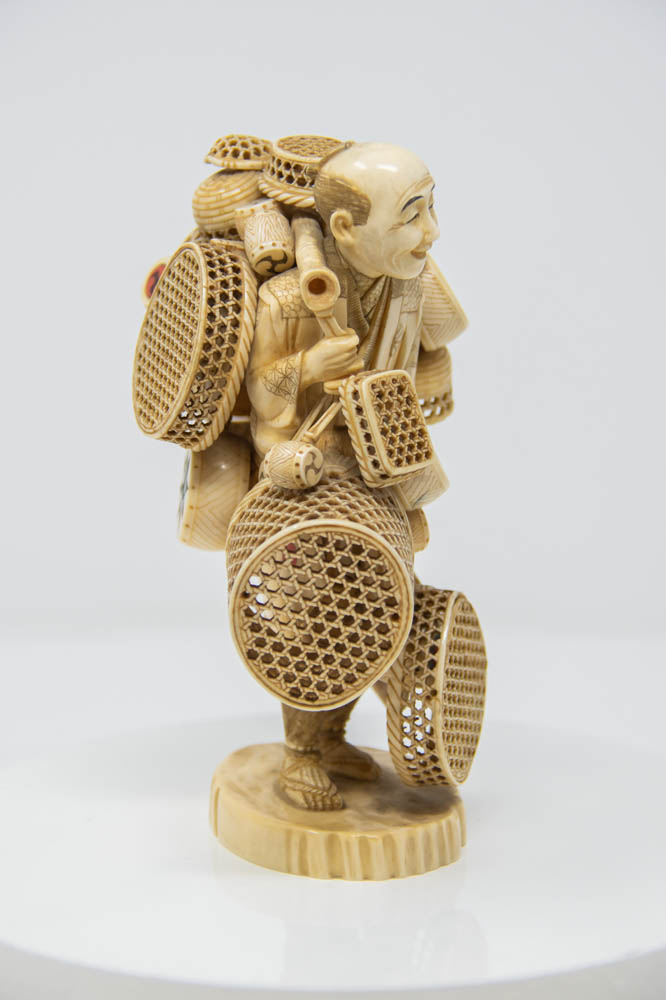



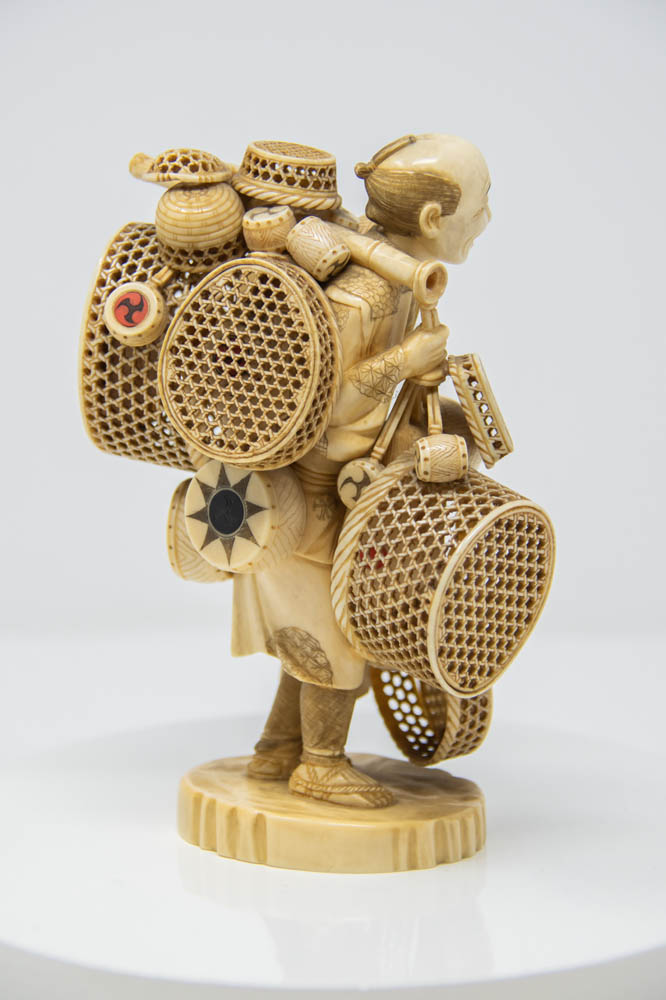








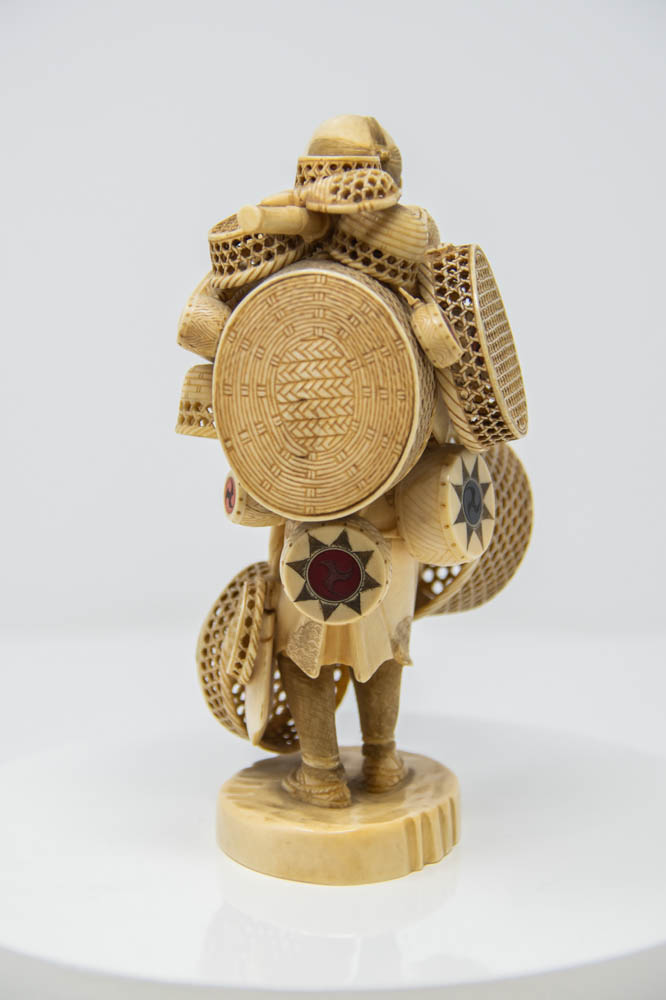

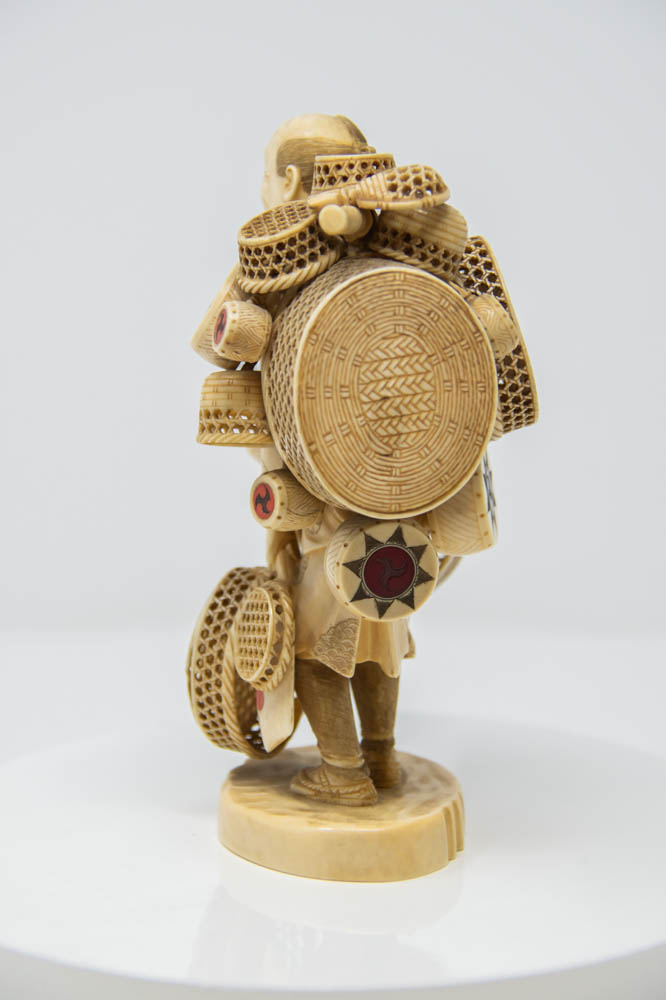
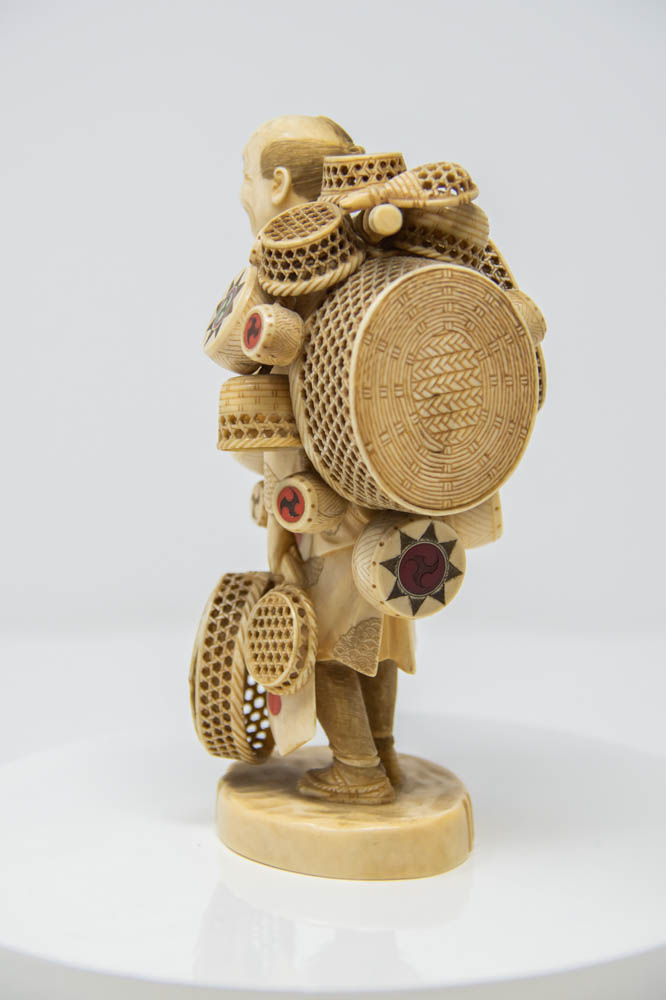
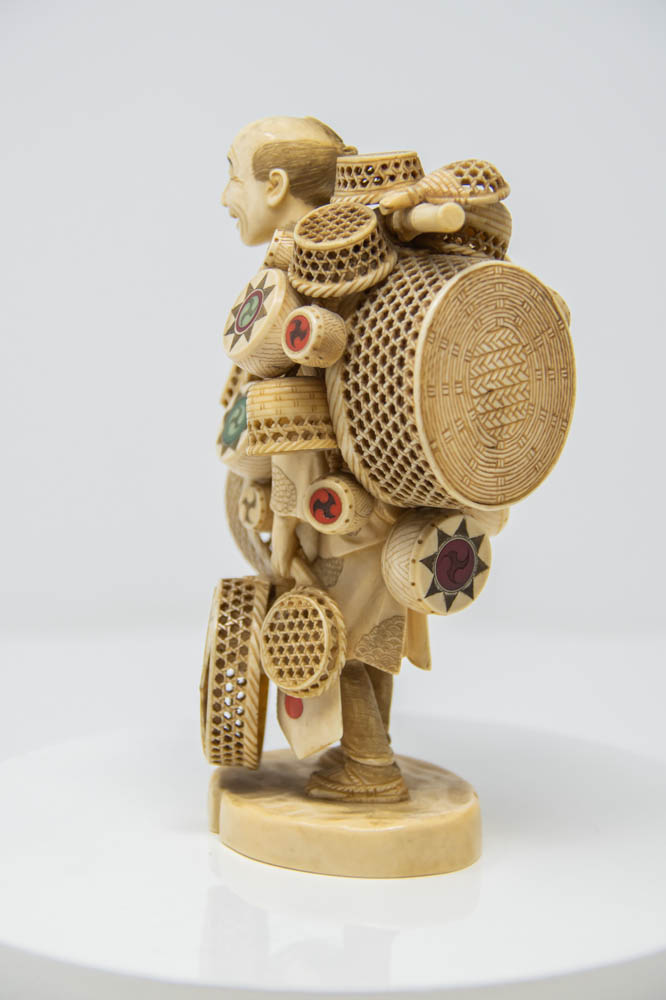










A controversial subject
Ivory has been carved from prehistoric times, although it wasn’t until the 19th Century that it took off in popularity.
The ivory trade is now known to be extremely controversial which has led to the sustained loss of elephants in particular across the globe. As a result, a ban on trading ivory was introduced in 1975 for Asian elephants and 1989 for African elephants due to unsustainable elephant poaching in the 1970s and 80s. The species were placed on Appendix I of the Convention for International Trade in Endangered Species (CITES) which forbids all international trade in a species and its products.
However, despite the ban - many countries – including the UK, US, Thailand and Japan – have domestic markets where it is legal to buy and sell ivory certified as antique or coming from legal stockpiles.
In the UK, for example, while it is illegal to buy and sell Asian elephant ivory dating after 1975 or African elephant ivory dating after 1990, there are some exemptions for trading in carved antique ivory (pieces carved before 3rd March 1947). Ivory pieces carved after this date but before the international ban came into force are also exempt if accompanied by a government-issued certificate.
This means that museums that hold historic collections of ivory, where they can be proved to have been obtained before the bans came into force can continue to hold / display those collections.
